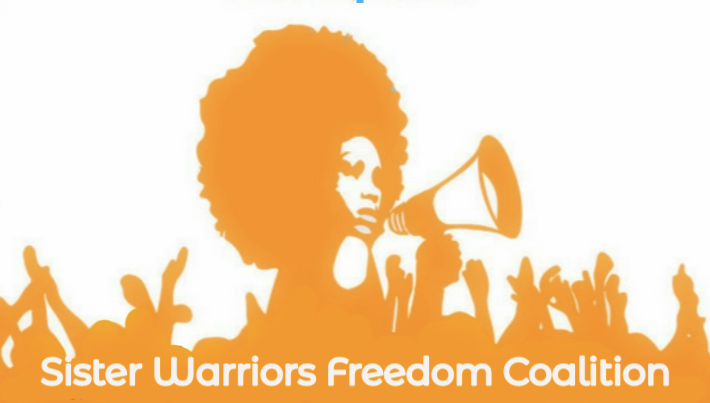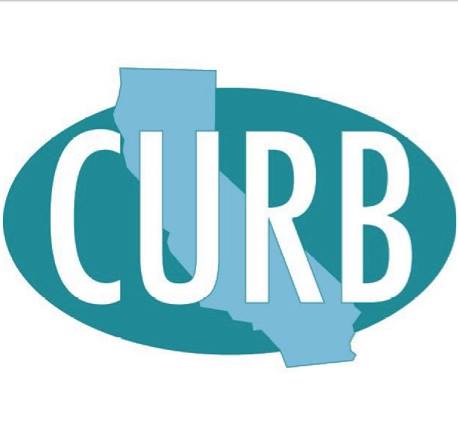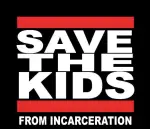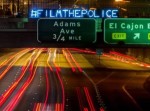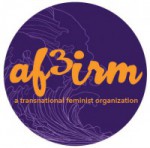Community Conversation on Racial and Gender Profiling
Hosted by members of United Against Police Terror San Diego and allies in coalition with ACLU’s effort for police accountability.
Write up by Cathy Mendonca
“The San Diego Police Department has often failed to follow its own rules regarding the collection of racial data at traffic stops, saying the community isn’t concerned about racial profiling.”
(Liam Dillon and Megan Burks Voice of San Diego)
Residents of City Heights and other areas of San Diego came together community conversation about racial profiling and how it affects City Heights this past Thursday at the East African Community Center.
The presentation was given by three City Heights Residents; Ramla Sahid, Aaron Leaf and Cathy Mendonca
The conversation was first opened up by Cathy sharing the an article from the Atlantic
“An Urban Myth That Should Be True”. But maybe they should. During a panel discussion with the current mayors of Los Angeles, Houston and New Orleans at the Aspen Ideas Festival Monday,NPR’s Michele Norris offered a chilling factoid about the importance of third-grade reading comprehension. The prison industrial complex will look at the test scores of a city’s third grade population,” she said. “If the test grades are low they know that they’ll have to start building a prison.”It turns out, planners have their own methods of predicting the need for future prisons. Max Williams, director of the Oregon Department of Corrections, told Graves that planners “look at complicated formulas that are based on arrest rates and demographic data, such as the number of 18-to-28-year-old men in the state.”
http://www.theatlantic.com/business/archive/2012/07/an-urban-myth-that-should-be-true/259329/
Cathy and Aaron of United Against Police Terror went into the different pathways or “pipelines” of criminalization and illustrated how these laws create the unjust profiling communities of color and marginalized genders of both
City Heights and other areas of San Diego.
THE PATHWAYS INTO CRIMINALIZATION; Issue, the Definition/Background/Procedure/Code and what is the social impact we see in our community.
Police in Schools
In a report “The Facts About Dangers of Added Police in Schools” from The Sentencing Project www.sentencingproject.org, gave the following;
“A 2011 longitudinal study of 470 schools nationwide examined school safety over a period of years (2003-2004, 2005-2006, and 2007-2008) during which police officers were added to some schools but not others over time.
The researchers found “…no evidence suggesting that [School Resource Officers] or other sworn law-enforcement officers contribute to school safety. That is, for no crime type was an increase in the presence of police significantly related to decreased crime rates. The preponderance of evidence suggests that, to the contrary, more crimes involving weapons possession and drugs are recorded in schools that add police officers than in similar schools that do not.”
Students who attend schools with on-site law enforcement are in greater danger of unnecessary involvement in the juvenile justice system through the criminalization of behaviors traditionally resolved through standard school discipline policies.”
“In a study using data from 2,270 U.S. schools from the National Center for Education Statistic’s national School Survey on Crime and Safety, researchers used various demographic factors to compare the rate at which schools report offenses to the police. They found that schools using law enforcement officers report offenses to the police at a significantly higher rate than those not using such officers.3 Law enforcement officers are ill-equipped to respond to students in need of mental health attention. Because police are not trained in fields such as education and developmental psychology, decisions such as whether to arrest a student rely on criteria which do not include the full range of options that would be provided if school officials responded. In many of today’s schools, police officers are now making decisions which were previously made by educational administrators”
“Studies routinely find that the minority composition of the school and the percentage of students identified as low income are significant drivers in elevated percentages of offenses reported to the police.5
Proposals that include increased police presence in schools disproportionately affect youth of color and are now
known to drive the school-to-prison pipeline, a concern recently considered in a congressional hearing on the matter that drew experts together to discuss the increasingly troubling relationship between school misbehavior and juvenile justice involvement. Among the research discussed was the recent finding by the U.S. Department of
Education’s Office of Civil Rights that more than 70% of students arrested or handed over to law enforcement officials from school are youth of color.”
“In the fall of 2012, the U.S. Department of Justice’s Civil Rights Division filed a lawsuit in Mississippi for disparate treatment of youth of color in its school-related disciplinary actions after a comprehensive investigation revealed patterns of mistreatment toward youth that appear to fuel a school-to-prison pipeline.”
Sourcehttp://sentencingproject.org/doc/publications/jj_Police%20in%20Schools%20Fact%20Sheet.pdf
Zero Tolerance Policies
The attached graph served as a guide, highlighting not only youth or color, but also foster youth as well who are affected by polices in schools based on behavior and discipline.
In terms of behavior, individuals with developmental and other disabilities may also be unfairly targeted because of the failure to develop and implement appropriate behavior plans or provide the necessary accommodations.
Discipline policies and punitive measures such as zero tolerance are often utilized in response to disability-related behavior, pushing students with disabilities out of the classroom and into the criminal justice system at alarming rates.
The same parallels can be drawn when examining how police and prison officials expect the same instant compliance to their commands. Police are often the first called to respond to medical psychiatric emergencies. If they do not receive compliance to their commands, they resort to a physical confrontation, often with brutal force.
For LGBTQIA identified students;
“Gay, lesbian, bisexual and transgender students are more likely to be disciplined in schools and arrested than their peers.
According to a report this summer by the Center for American Progress:Gay and transgender youth, particularly gender nonconforming girls, are up to three times more likely to experience harsh disciplinary treatment by school administrators than their heterosexual counterparts. As with racial disparities in school discipline, these higher rates of punishment do not correlate to higher rates of misbehavior among gay and transgender youth.
LGBT youth make up 13-15 percent of the juvenile justice system, even though they make-up only 5–7 percent of the population overall, and 60 percent of these youth are black or Latino.
This high rate of contact with the system is due in part to harsh school sanctions often based on their perceived sexual orientation or gender identity.
School discipline policies across the United States have been under heightened scrutiny because of the disparate impact they have on youth of color, particularly black boys. from the U.S. Department of Education’s Office of Civil Rights revealed that rigid school discipline policies — which lead to suspensions and expulsions of students for even the most minor offenses — perpetuate a school-to-prison pipeline that disproportionately criminalizes youth of color.
But hidden among these school discipline data are thousands of gay and transgender youth, particularly those of color, who bear a double burden of disparate impact but are rendered all but invisible because this federal data does not include information on sexual orientation and gender identity.”
Sources
http://www.pbs.org/wnet/tavissmiley/tsr/education-under-arrest/school-to-prison-pipeline-fact-sheet/
http://emmarosenthal.wordpress.com/2011/10/23/october-22-speech-against-police-brutality/
http://www.jaapl.org/content/35/4/406.full
http://m.huffpost.com/us/entry/2610062/
http://www.mentalhelp.net/poc/view_doc.php?type=doc&id=14284
Curfew Violations were discussed next. Cathy gave the codes, when they are enforced and what is the end result. All information can be found in the San Diego Police website.
Truancy (San Diego Codes)
Education Code (48264) Juveniles must attend school. Failing to attend can result in an appearance before the Student Attendance Review Board.
Daytime Loitering
Municipal Code 58.05b1 governs that juveniles are not to be in public on a school day between 8:30 am and 1:30 p.m. without their parent or legal guardians’ permission.
“Daytime Loitering hours” means the period from 8:30 am and 1:30 p.m. on any school day.
Curfew Municipal Code 58.0101, 58.0102, and 58.0103
“Curfew hours” means the period from 10:00 p.m. any evening of the week, until 6:00 a.m. the following day.
Curfew sweeps mean that you can be arrested for your age alone with no other crime committed. Once arrested their risk of being arrested again increases exponentially and now they are in the system as having a record.
According to the National Council on Crime and Delinquency (NCCD), curfew enforcement is often ineffective and unnecessarily funnels large numbers of non delinquent youth into a criminal justice system that is already inundated with alleged offenders.
In addition, some opponents cite a lack of evidence supporting the efficacy of curfew legislation. According to the literature review conducted by Ruefle and Reynolds, little or no recent evidence indicates that curfew initiatives have an effect on juvenile crime, nor has research addressed the impact of curfews and their enforcement on the criminal justice system as a whole.
The American Civil Liberties Union (ACLU), argues that curfew measures violate the constitutional rights of children and parents. Legal challenges to the constitutionality of curfew laws are most often based on the 1st, 4th, 9th, and 14th amendments to the U.S. Constitution, according to a recent report by OJJDP. Opponents of curfew ordinances are concerned with the restrictive nature of these laws and the limitations on a youth’s first amendment right to free speech and association. Others argue that curfews give law enforcement excessive power to detain children without probable cause and subject them to police questioning in violation of the fourth amendment’s guarantees against unreasonable search and seizure.
City Heights, where the curfew sweeps occur, is one of the most ethnically diverse neighborhoods in the nation. About 54 percent of the population is Hispanic, 16 percent is Asian (Vietnamese account for 9.9 percent of the population), and 16 percent are African or African American, according to American Community Survey statistics. Just 20 percent of the residents are white, according to the American Community Survey of 2010.
Most diversion “classes” in order for youth to avoid imprisonment cost money.
About half the 26,200 households in City Heights have incomes of under $35,000, and the families are larger and more likely to be single parent households, according to U.S. Census statistics.
And the area has among the highest percentage of people under 18 in California: where the statewide average is about 28 percent, nearly 33 percent of City Heights residents are under 18.
Parents are not informed of these sweeps or what the exceptions or roghts of the children are.
More than 70 percent of the households have limited English proficiency, according to a California Endowment public health survey.
In San Diego, youth are often not told of their rights or exceptions to these codes, which allows them out while not in being in any violation;
Rights/Exceptions were list
Accompanied by the minor’s parent or guardian, or a responsible adult, on an errand at the direction of the minor’s parent or guardian, or a responsible adult, without any detour or stop. In a motor vehicle involved in interstate travel. In an employment activity, or going to or returning from an employment activity, without any detour or stop. Involved in an emergency. On the sidewalk abutting the minor’s residence. Attending or returning home from, without any detour or stop, an official school, religious, or other recreational activity supervised by adults and sponsored by the City of San Diego, a civic organization, or another similar entity that takes responsibility for the minor. Exercising or returning home from exercising, without any detour or stop.
First Amendment rights protected by the U.S. Constitution, Traveling between activities listed above & emancipated pursuant to law.
1/1/2009 through 4/30/2012 – Amount of Arrests of youth in curfew sweeps is over 4,700 in the county.
Source
http://www.sandiego.gov/police/services/prevention/community/parental/curfew.shtml
Sweeps to combat Human Trafficking
Cathy Mendonca made a request for the profiling demand to be extended to Transgender and other gender variant individuals to see (and prove) how they may be unjustly profiled and discriminated against.
El Cajon Blvd is known as the “blade” for the trafficking of individuals, predominantly women
and young girls. It was found that these women were picked up in (curfew type) sweeps and had to take classes on how to “not to be trafficked”
It was found out from a source that University Avenue is the new “blade” for the trafficking of transgender individuals. LGBTQIA youth-in particular transgender youth-are at significantly highers risks of being trafficked than the general youth population. These youth make up 40% of the runaway and homeless youth population, and once on the streets, they face high chances of becoming victims or trafficking or of police encounters/abuse.
San Diego is ideal for sex traffickers because it’s a large metropolitan city, with paying customers and a lot of runaways. On any given night, there are about 2,500 reported runaway children in San Diego, all of them are vulnerable to being kidnapped, and many are forced into prostitution.
Cathy also stated that young Women and girls are obligated to take diversion classes and are told how not to be trafficked, enforcement of victim shaming culture. She also stated the risk of mistreatment/misconduct by police officers as well as entrapment by undercovers in prostitution stings may also need to be addressed with this demand.
Sources
http://www.queerty.com/lgbt-youth-at-high-risk-of-becoming-human-trafficking-victims-20130731/
http://www.huffingtonpost.com/2013/06/06/lgbtq-youth-sex-trafficking_n_3398292.html
http://www.acf.hhs.gov/blog/2013/06/lgbtq-youth-at-high-risk-of-becoming-human-trafficking-victims
For Gender Variant Individuals;
Law enforcement agencies not only enforce systemic power relations based on race through racial profiling, race-based policing, and targeting of communities of color, they also police gender lines, and enforce dominant racialized gender norms. Yet, the gendered aspects and manifestations of law enforcement violence are often invisible in organizing and advocacy against police brutality, and must be documented and addressed.
Sometimes police enforcement of the gender binary – the notion that there are only two genders, male and female, with specific conduct and appearance mandated for each. until just a few decades ago, cops used to enforce what were known as “sumptuary laws,” which required individuals to wear “gender appropriate” clothing, and subjected people to arrest for “impersonating” another gender. Today, such regulations remain in effect in prisons, and are enforced through disciplinary infractions and punitive segregation. And, they still inform law enforcement conduct – for instance, the New York City Police Department’s current arrest paperwork still has a box to check for “impersonating a female.”
Additionally, police requests for identification, which may not match a person’s gender identity, often lead to presumptions that transgender people are fraudulent, deceitful, or inherently suspicious, as well as to verbal abuse and harassment, physical abuse, and invasive and abusive searches to satisfy an officer’s curiosity, humiliate, or assign an individual a gender based on their genital status.
People who do not conform to gender norms are perceived by law enforcement officers as “disorderly,” suspicious, threatening, violent, fraudulent, deceitful, or mentally unstable because of their perceived gender disjuncture, and are therefore routinely profiled, harassed, and arbitrarily arrested for vague offenses such as “disorderly conduct.” They are also subjected to transphobic and homophobic verbal abuse and punishment, in the form of physical violence, for failure to “comply” with prevalent norms of gender identity and expression.
Traffic Stops
“Perhaps another demand could be for transparent data collected on Transgender and other gender variant individuals? How are they profiled?”
Source
http://www.incite-national.org/page/policing-gender#sthash.bPHszkbE.dpuf
Pedestrian Stops – Stop and Frisks
Abusive and overly intrusive searches – a form of legalized assault masked as procedure. Visual body cavity searches – often performed on womyn and trans people of color profiled or perceived to be concealing drugs.
As described by a federal court , stop and frisks are “demeaning, dehumanizing, undignified, humiliating, terrifying, unpleasant, embarrassing, repulsive, signifying degradation and submission.”
Curb sitting became the open discussion with community members and with Christina Griffin NAACP member and representative working with the ACLU on this particular police procedure to ensure changes will be made to this humiliating experience of those stopped.
In “curb sitting,” folks detained are made to sit on the curb for an indefinite amount of time during routine street stops, They are handcuffed or ordered to sit on a curb or in the back of a police car but may be released afterward.
Source
http://www.mercurynews.com/ci_23606015/san-jose-breakthrough-curb-sitting-policy-roll-out
Aaron of UAPTSD went on to discuss Gang Profiling Injunctions and how someone can easily be entered into a gang database.
Gang injunctions; developed in Los Angeles in the 1980s, are court-issued restraining orders prohibiting gang members from participating in certain activities. It is based on the legal theory that gang activity constitutes a public nuisance that prevents non-gang members from enjoying peace in their communities.
There are 19 gang injunctions in San Diego County. Six of them target gangs in Escondido. Another six target gangs in Oceanside.
Once someone is labeled as s gang member, it prevents them from everyday activities such as talking to people they grew up with. It also detrimentally impacts one’s possibility of employment and educational opportunities. Policies like gang injunctions work hand-in-hand to promote gentrification, or to remove “undesirable” residents.
Police can often used stereotypes that are perpetuated through the media to target who they think are potential gang members. Therefore, urban youth of color (often African American or Latino) implicitly become the targets of gang injunctions.
The Gang Profiling labels people as gang members for “gang enhancement” charges
Gang injunctions and Gang databases
Civil orders—known as injunctions—are issued against people law enforcement labels gang members. This labeling does not require that the person has actually been convicted of a crime. And a youth arrested and charged with violating the injunction would serve mandatory time in prison or juvenile detention, where they would meet hardened criminals.
The constitutional concerns associated with injunctions are certainly more pressing when considered in the context of inactive gang members, and people who were never associated with gangs in the first place.
In San Diego, City heights ranks the 2nd highest of Gang re-entry aside from downtown.
Leaf also made a point that Gang members are also now being labeled as street terrorists
“There IS a way to petition to have your name removed from the database, it requires you to prove that you have no contact with any gang members. However, that COULD mean no contact with anyone else who would be affiliated as a gang member, even talking to family or friends profiled as a “gang member” who happen to be in the database with no gang history.”
Petition for removal of gang status
http://www.sdcda.org/preventing/gangs/petition-for-removal-from-gang-injunction.pdf
Another useful resource; http://www.youth4justice.org/wp-content/uploads/2012/12/TrackedandTrapped.pdf
Sources
http://blog.sfgate.com/kalw/2010/04/21/profiling-or-policing-oaklands-proposed-gang-injuction/
http://www.stanford.edu/class/e297c/poverty_prejudice/ganginterv/racialprofiling.htm
http://theblackhour.blogspot.com/2010/04/oakland-gang-injunction-encourages.html
https://aclu-wa.org/coalition-concerned-about-racial-profiling-opposes-gang-bill-hb-1126
http://www.kpbs.org/news/2010/oct/18/are-gang-injunctions-effective-north-county/
http://www.sdcda.org/preventing/gangs/injunctions.html
http://www.sdcda.org/preventing/gangs/map.html
http://www.streetgangs.com/news/092009_gang_database#sthash.FDvgPUlV.dpbs
Additional links to support information
http://www.racialprofilinganalysis.neu.edu/background/jurisdictions.php?state=CA
http://www.healthycal.org/archives/12417
http://www.scansandiego.net/Scanner/police_codes.html
As part of closing out the conversation, Ramla facilitated community members to participate-using their own experiences along with the ones highlighted in the discussion, to create visuals of statements to illustrate the various forms of profiling they’re have experienced. This included gender and sexually as a community member shared they were harassed by an officer because of their perceived sexual orientation.
Profiling hurts the entire community. Innocent youth and adults get harassed while many criminals do not get stopped or searched because they are not minorities. As such, our prisons disproportionately house more minorities because the law enforcement agencies target minorities. For our society to move forward, we must become a truly inclusive society. We must educate and embrace the inner-city youth so that a permanent underclass does not form. For the public to adopt policies that are more progressive in dealing with youth crime, they must recognize that crime is not just an inner-city problem, but a problem everyone must address. The young are to be cherished not targeted.
Cathy Mendonca
United Against Terror San Diego
*********************************************************************************



